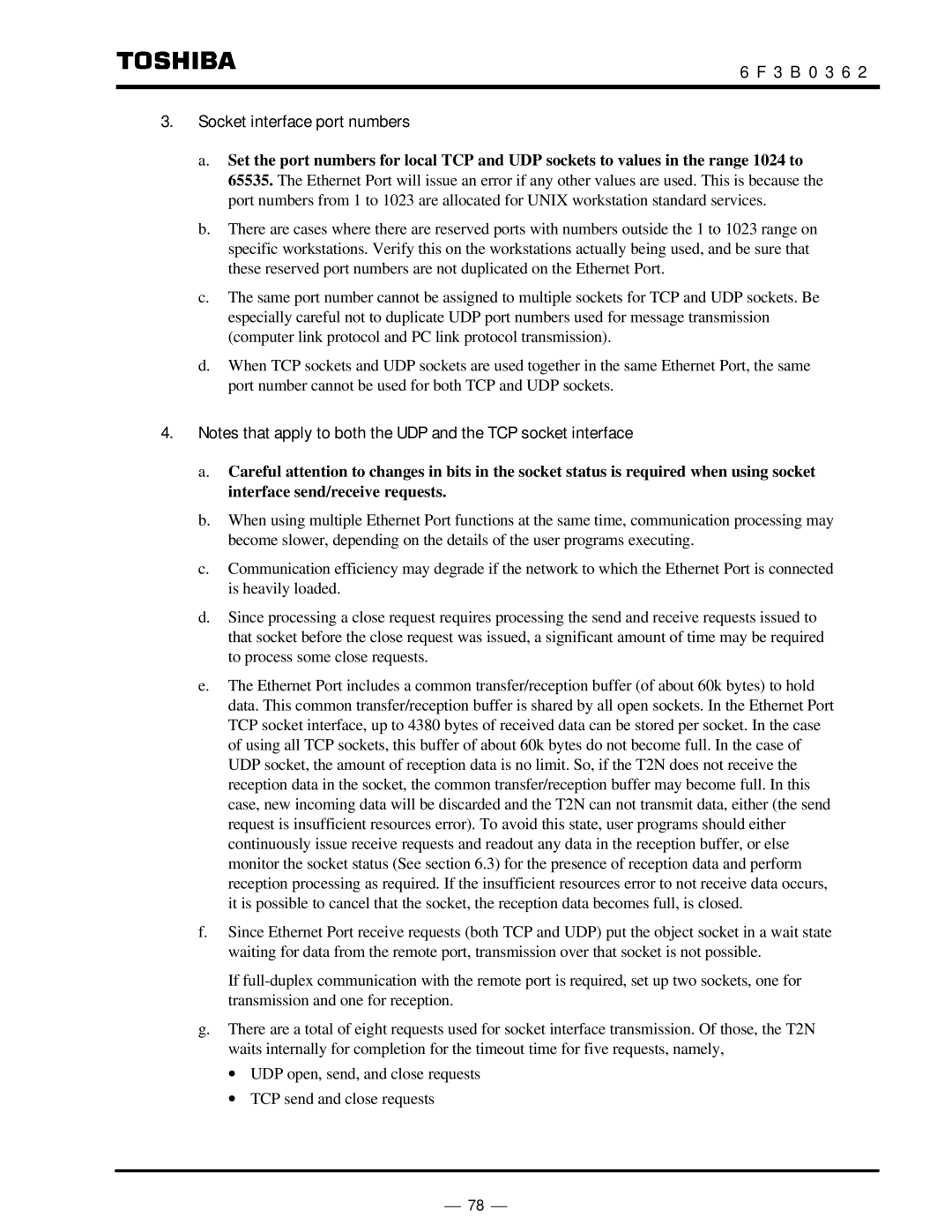
6 F 3 B 0 3 6 2
3.Socket interface port numbers
a.Set the port numbers for local TCP and UDP sockets to values in the range 1024 to 65535. The Ethernet Port will issue an error if any other values are used. This is because the port numbers from 1 to 1023 are allocated for UNIX workstation standard services.
b.There are cases where there are reserved ports with numbers outside the 1 to 1023 range on specific workstations. Verify this on the workstations actually being used, and be sure that these reserved port numbers are not duplicated on the Ethernet Port.
c.The same port number cannot be assigned to multiple sockets for TCP and UDP sockets. Be especially careful not to duplicate UDP port numbers used for message transmission (computer link protocol and PC link protocol transmission).
d.When TCP sockets and UDP sockets are used together in the same Ethernet Port, the same port number cannot be used for both TCP and UDP sockets.
4.Notes that apply to both the UDP and the TCP socket interface
a.Careful attention to changes in bits in the socket status is required when using socket interface send/receive requests.
b.When using multiple Ethernet Port functions at the same time, communication processing may become slower, depending on the details of the user programs executing.
c.Communication efficiency may degrade if the network to which the Ethernet Port is connected is heavily loaded.
d.Since processing a close request requires processing the send and receive requests issued to that socket before the close request was issued, a significant amount of time may be required to process some close requests.
e.The Ethernet Port includes a common transfer/reception buffer (of about 60k bytes) to hold data. This common transfer/reception buffer is shared by all open sockets. In the Ethernet Port TCP socket interface, up to 4380 bytes of received data can be stored per socket. In the case of using all TCP sockets, this buffer of about 60k bytes do not become full. In the case of UDP socket, the amount of reception data is no limit. So, if the T2N does not receive the reception data in the socket, the common transfer/reception buffer may become full. In this case, new incoming data will be discarded and the T2N can not transmit data, either (the send request is insufficient resources error). To avoid this state, user programs should either continuously issue receive requests and readout any data in the reception buffer, or else monitor the socket status (See section 6.3) for the presence of reception data and perform reception processing as required. If the insufficient resources error to not receive data occurs, it is possible to cancel that the socket, the reception data becomes full, is closed.
f.Since Ethernet Port receive requests (both TCP and UDP) put the object socket in a wait state waiting for data from the remote port, transmission over that socket is not possible.
If
g.There are a total of eight requests used for socket interface transmission. Of those, the T2N waits internally for completion for the timeout time for five requests, namely,
∙UDP open, send, and close requests
∙TCP send and close requests
⎯ 78 ⎯
